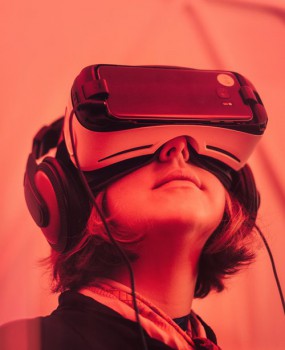Experimentation leading to new opps for creators: CMF Trends
The funder's latest report explores the ways content producers can capitalize on new opportunities like interactive audio and location-based entertainment.
 Amidst instability and change in the global media industry, experimentation is changing the way that content is created and distributed. And according to CMF’s annual trends report, titled “Hold My Hand,” 2018 marked a significant evolution in the way the audiovisual industry relates to technology
Amidst instability and change in the global media industry, experimentation is changing the way that content is created and distributed. And according to CMF’s annual trends report, titled “Hold My Hand,” 2018 marked a significant evolution in the way the audiovisual industry relates to technology
“Technology has long been blamed for being a divisive force, but some experiments highlight its uniting nature: virtual reality is being used in public spaces, smart speakers are making our homes interactive, and “edutainment” products are being increasingly used in a variety of learning environments,” said report author Catherine Mathys. “Opportunities will abound for creators of interactive experiences in this era of experimentation.”
Split into four sections, the funder’s latest report dives into potential opportunities for creatives in the fields of media consumption, evolving business models, markets and competition, and technology and innovation.
Audio technology was identified as an opportunity for creatives through the continued rise of podcasts, in addition to the creation of content for smart speakers and interactive audio content for kids. Overall, audio consumption continues to grow, with Canadians between the ages of 18 and 34 showing the most enthusiasm for this medium, said the report. All told, 41% of this age group said they listen to a podcast every month.
Notably, smart speakers in particular are rising in popularity. Eight percent of the national population now owns a smart speaker and 37% of Canadians between the ages of 16 and 64 say they have used an Amazon Echo, Google Home or Apple HomePod or plan to purchase one in the coming months.
Content creators also continue to experiment with interactive stories, such as Netflix/Google Home’s audio adventure for Lost in Space. Meanwhile, in Canada, Groupe Media TFO created Boukili Audio, an interactive Google Assistant game for four to eight year-olds to learn French. The report said that although this medium presents a new opportunity to tell stories, particularly with the chance to engage children, care should be taken when dealing with such a young audience as they may not understand to whom they are speaking.
With global digital companies battling it out to acquire exclusive brands and titles for their online offerings, new opportunities are springing up for producers who want to diversify their operations, said the report.
Education tech (or edtech) also presents a new opportunity for creators. Although edtech brings to mind ideas about training tools and educational resources, this market can also include online videos like TED Talks. The CMF notes that there is also an interest in gamification in the space. In a study done by Frost & Sullivan, the global edtech market generated US$17.7 billion in 2017 and is expected to reach $40.9 billion in revenue by 2022.
With some VR and AR companies keen to enter the edtech market, creators have the opportunity to develop content for the space, notes the CMF. Another opportunity for creatives and companies is the need to develop classroom-appropriate audiovisual content for catalogues like CBC/Radio-Canada’s Curio and the National Film Board’s Campus.
The report also argues that the out-of-home entertainment sector is a promising field for creators. While VR is still struggling to gain traction in homes, location-based entertainment (LBE) at venues like movie theatre chains is on the rise. For example, in September, Cineplex partnered with virtual reality company VRstudios to open up various VR-based attractions in Canadian theatres, in addition to acquiring a share in the company. LBE also offers content creators the chance to reach a wide audience at a lower cost through these venues, giving audiences a high-end VR experience in a social setting.
Another future opportunity identified is the evolving relationship between artificial intelligence (AI) and the human creative process. Although this trend is not new, 2018 was the year people started to question the long-term impact of machines on the creative process.
With machines creating their own films through the use of AI, the CMF’s report acknowledges that this poses a number of questions, including: if we will be able to tell the difference between features made by humans versus ones made by machines, and if work created by a machine is really art.
Even with these changes, “Hold My Hand” argues that human contribution is still essential to a machine’s creativity. Moving forward, the next step will be for creatives to learn how to meaningfully collaborate with machines, added the study.
The 2019 Trends report was written and researched by Mathys, Tanguay, Sabrina Dubé-Morneau and Laurianne Desormiers.
Photo by Samuel Zeller on Unsplash

 The definitive CDN broadcast and production resource.
The definitive CDN broadcast and production resource.










